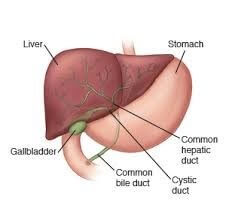Cholecystitis
Cholecystitis is gallbladder inflammation. The disease is often caused by gallstones. Gallbladder inflammation, most of the times occurs at the same time with a pain in the upper right part of the abdomen that spreads to the back and right shoulder. Cholecystectomy is the operation of gallbladder removal that is done either Laparoscopic cholecystectomy or open cholecystectomy.

Symptoms:
The probable symptoms of cholecystitis are:
- Severe pain in upper right part of abdomen
- Pain in back and right shoulder
- Abdominal muscle sensitivity when the abdomen is touched
- Nausea
- Vomiting
- Fever
Necessary instructions after operation:
You can take a bath 24 hours after your operation with the permission of your doctor. After the bath, bandage is not needed and the wound openness does not cause any problem. In case of symptoms like tightening around the surgery site, fever, chills, sever and continuing pain, vomiting, increase of heart rate, paleness, itching, lack of bowel movements, stomach distension, constipation, dark urine, inflammation and high sweating see your doctor at once. If you have sever cough, keep your surgery site by hand.
Activities after surgery:
- Open cholecystectomy: Avoid doing difficult tasks and heavy exercises and lifting heavy objects. You would better take a rest after tiredness and increase your activities gradually based on your tolerance.
- Laparoscopic cholecystectomy: After this surgery invite the patient to move for reduction of stomach distension. After two days the patient is able to do routine activities. But avoid doing difficult tasks and heavy exercises and lifting heavy objects at least for one week.
Diet:
The patient have to eat low-fat foods at least for 6 weeks and then add greasy foods to his diet. It is suggested to have light and frequent meals.
Follow up cares:
If you have pathology samples, go to the hospital 10 days after operational surgery. Visit your doctor at determined appointments.
References: Bruner and sudars, translated by Maryam Hazrati, Darya dokht Masrur Rudsari




